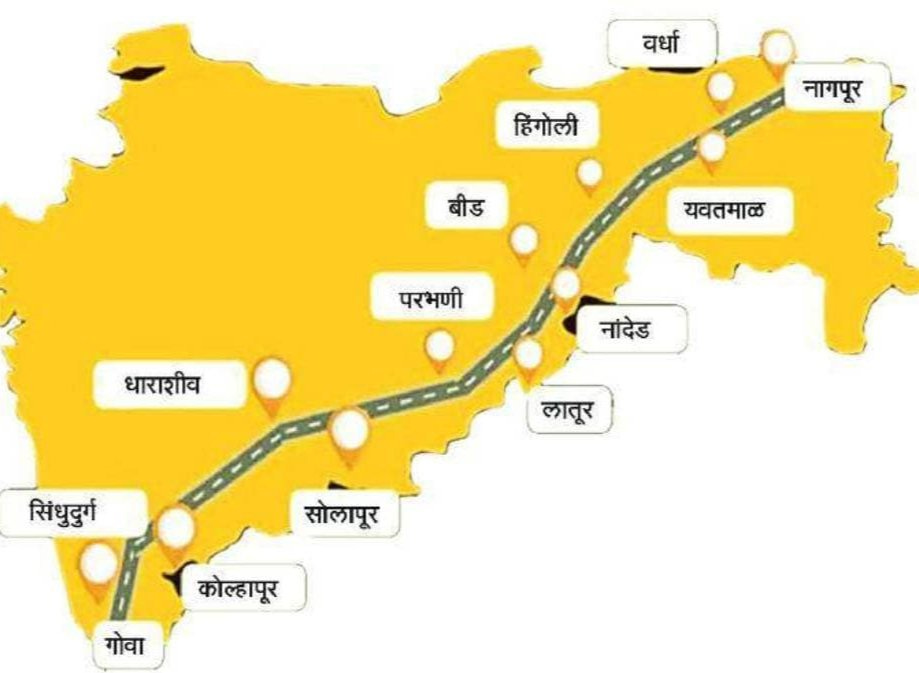Maharashtra has formally approved land acquisition for the 800-km-plus Shaktipeeth Expressway - also called the Nagpur–Goa or Maha Shaktipeeth Mahamarg - envisioned as a cultural–tourism corridor linking major shrines and destinations across the state. The move clears the way for acquisition to begin along the corridor from Wardha to Sindhudurg.
What exactly was approved - and when?
Two milestones frame the decision. First, the state cabinet cleared land acquisition for the project in late June 2025. More recently, a government resolution (GR) issued in late August 2025 provided administrative approval, unlocking immediate acquisition activity and other implementation steps.
The corridor at a glance
Length & reach: ~802–802.6 km across 12 districts, with the alignment running from Paunar/Pawanar (Wardha) in eastern Maharashtra to the Sindhudurg–Goa border in the west.
Purpose: To connect key Shakti Peeths and other pilgrimage/tourism sites - frequently cited are Tuljapur, Kolhapur and Mahur among a wider cluster of religious destinations - while creating a high-speed east–west spine.
Operator/implementer: The Maharashtra State Road Development Corporation (MSRDC).
Funding and financial architecture
The GR provides for ₹20,787 crore toward land acquisition and related project expenses - ₹12,000 crore principal and ₹8,787 crore interest—with financing arranged via HUDCO. The state has also committed to cover any shortfall in MSRDC’s revenue during the loan period, de-risking repayments while acquisition proceeds.
Travel-time promise
Official communication and coverage repeatedly point to a dramatic cut in road travel time between Nagpur and Goa - from roughly 18–21 hours today to around 8 hours once the expressway is operational, by virtue of an access-controlled, high-speed alignment.
Route revisions: Kolhapur flashpoint
Responding to local opposition, the state has revised the proposed alignment in Kolhapur district, dropping six talukas - Shirol, Karvir, Hatkanangale, Kagal, Bhudargad and Ajra - while instructing MSRDC to explore alternatives. Final route decisions have been reserved for the top executive leadership.
Protests and political pushback
Farmer groups and opposition leaders have mobilized across parts of western Maharashtra and Marathwada, staging coordinated protests, highway blockades and rallies. Chief concerns include the loss of fertile farmland, inadequate consultation, and compensation anxiety during acquisition. These tensions were a major factor in earlier pauses and continue to shape the alignment review, particularly in Kolhapur and adjoining districts.
What happens next
With the GR in place, the state can proceed with land acquisition along approved stretches while MSRDC advances detailed design and alignment refinements—especially in sensitive pockets like Kolhapur. Expect intensified engagement on compensation, resettlement and route fine-tuning as the project moves from policy clearance to on-ground execution.
Why this corridor matters
Beyond religious tourism, the expressway promises an east–west economic conduit—linking Vidarbha and Marathwada with the Konkan - potentially easing logistics, spurring rural enterprise, and strengthening last-mile tourism circuits around shrines and heritage towns. The scale, however, means benefits will hinge on how deftly the state manages land acquisition, environmental due diligence, and stakeholder trust.
Sources: Times of India, India Today, Moneycontrol, IndiaTV News, Indiattimes, GKToday


